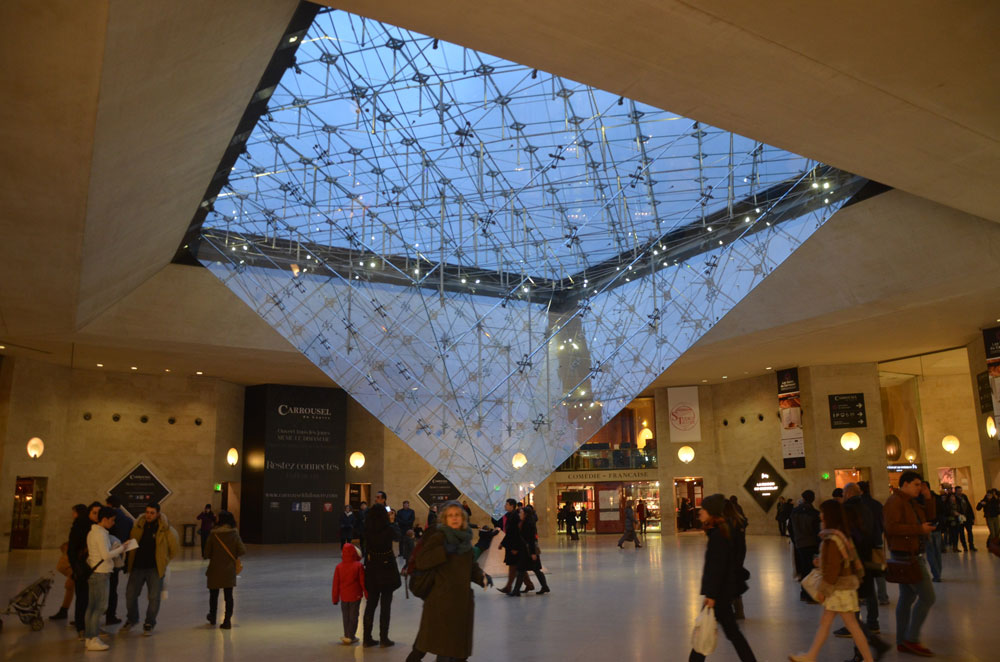
By Carmen Jordá Sanz
On Sunday October 19, criminals managed to steal eight pieces of extremely valuable jewellery from the Louvre Museum’s Gallery of Apollo, in Paris. The robbery highlights long-standing issues for criminology in the field of cultural heritage, as museum security has to address traditional and emerging threats as well as a range of symbolic visions and criminal dynamics. This means that, when a security breach occurs, the costs are felt on many different levels.
From a security point of view, there are five key ideas that can help us understand what the flaws were in the Louvre, as well as how, and why, criminals target museums.
1. Physical security is paramount
Although there is no doubt that cybersecurity is a major threat to cultural institutions – with risks ranging from unauthorised access to digitised catalogues to sabotaging surveillance and alarm systems – we cannot downplay the essential role of physical security.
In many cases, attackers have little need to hack into sophisticated computer systems – they can gain access through windows, service doors, roofs or false walls using rudimentary tools. Initial reports of the Louvre robbery suggest that the thieves broke in via a side façade, using temporary scaffolding to gain access without resorting to complex digital intrusion.
Digital and physical threats cannot be addressed in isloation. Museums can shield networks, encrypt data and monitor virtual access, but if a door is still weak or poorly guarded, intruders will be able to get in.
2. Mixed motivations: money, symbols, protest
Museums occupy a strategic, often controversial position because they concentrate assets that attract multiple types of criminal activity. In recent years, attacks linked to activism and terrorism have sought to make a symbolic impact or grab media attention by damaging or defacing artistic heritage. However, theft for profit has not disappeared.
There are networks dedicated to extracting pieces from museums, and then selling them on black markets or dismantling them and selling them through other covert channels. Investigations into the major thefts of recent decades have highlighted a convergence of these motivations – alongside ideological or propaganda motives, the economic logic of property crime as a lucrative and highly specialised business persists.
However, the artistic and symbolic value of many works makes museums targets that go beyond pure monetary gain, which is why theft does not always follow the classic logic of profit. In the case of the Louvre, the authorities have pointed out that there could be links to specialised networks and international resale markets, demonstrating the coexistence of material and symbolic motivations in the same event.
3. Simple tools prevail
The popular imagination – reinforced by films and television series – tends to view museum robberies as complex operations. Common features include meticulously engineered plans, cutting-edge technology, and spectacular feats: tunnelling in from sewers, acrobatically dodging laser beams and cameras, death-defying stunts, and so on.
The appeal of these stories is unquestionable, but practical criminology finds that more traditional methods – breaking shop windows, cutting locks, easily disabling alarms, prying open glass panes or frames, exploiting security gaps – prevail in many real cases.
Real cases show that sophistication is not essential for success if vulnerabilities exist. Examples include the 1990 robbery of the Isabella Stewart Gardner Museum in Boston – where the assailants acted during the night, forcing doors and gaining access to interior areas – and the 2019 Dresden Green Vault Robbery .
Underestimating “rudimentary” measures is a common mistake: a simple tool, human error, or a poorly planned routine can be the thing that opens the door to a seemingly impossible robbery.
Ultimately, many museum thefts can be explained by the principle of Occam’s razor: the simplest explanation – a physical breach, a poorly guarded key, lax security – is usually the correct one. Something apparently simple, such as a skilled hand or a basic tool, can break the most sophisticated systems when combined with the right opportunity and knowledge.
4. Thieves first come as visitors
The intelligence and preparation phase of a robbery usually relies on things that, at first glance, seem trivial. They can include reconnaissance visits to the museum during normal opening hours, watching security personnel routines, taking advantage of maintenance or exhibition setup times and, on occasion, complicity or inside knowledge from museum staff.
Unremarkable information has enabled many robberies: who monitors certain corridors, the doors that serve as emergency exits, cleaning schedules, areas under construction, the locations of camera blind spots, and so on.
In addition, there are hidden structural elements: rooms that are not always shown on public plans, technical corridors, ventilation ducts, or secondary access points not disclosed to the public.
This general lack of knowledge about the complete layout of the museum gives sophisticated criminals an advantage. In the case of the recent theft at the Louvre, several media outlets have highlighted that the perpetrators acted quickly and knew where to strike, suggesting a high level of prior reconnaissance and planning.
5. Heritage is not just valued in euros
The heritage preserved by museums cannot be measured in solely monetary terms. When a work disappears or is damaged, the loss goes far beyond its market value – it severs a link with history, with human creativity, and with the cultural legacy we have received and should pass on.
Every stolen or destroyed piece leaves a void in the way we understand our past and how we make sense of the artistic and social experience of the present. Museums are guardians of this shared heritage. They house unique, irreplaceable objects that tell the story of who we were, how we thought, and what we valued over time.
The damage caused by theft affects society as a whole, because each loss diminishes our ability to learn, admire and recognise ourselves in what others have created before us. For this reason, the protection of artistic, historical and cultural heritage cannot be limited to preventing isolated cases of theft.
It requires comprehensive policies that integrate restoration, international cooperation, traceability of artefacts and ongoing staff training, as well as an active commitment from citizens to the value of their museums. Caring for heritage means caring for the living history of a culture.
If the recent episode at the Louvre teaches us anything, it is that museum security must be conceived as a balance between physical protection and digital defence. The threats are diverse, the methods change, but the essential risk remains the same: losing what connects us to our past and enriches us as a society. Heritage criminology reminds us that every well-protected museum is a collective victory against oblivion, plunder and indifference.![]()
Carmen Jordá Sanz is Director of the Department of Criminology and Security at Camilo José Cela University, Madrid.






























Leave a Reply